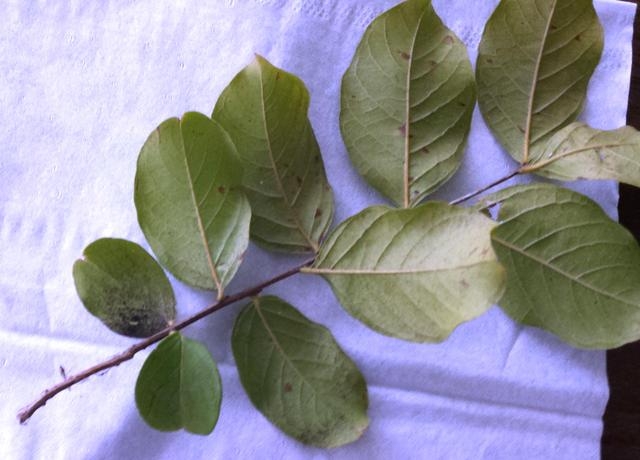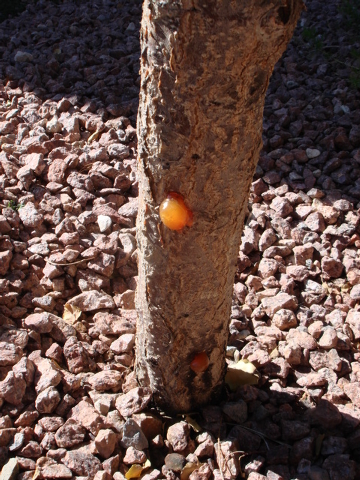Dolgo crabapple trees can thrive in desert conditions
Q: I am hoping to plant two semidwarf crabapple trees on the west side of my house. Could you please tell me which cultivars will do well here? I am looking for crabapples that are good for raw eating, jelly and apple butter. I also need to know which are good for cross-pollinating each other.
A: I have never done trials with crabapples, so my information is limited. I did contact Tom Spellman at Dave Wilson Nursery in California and he confirmed that the Dolgo variety has done well under desert conditions, doesn’t need a pollinator, makes good jelly and is an excellent pollinator for other crabapples.
The fruit matures in late summer, red with a sweet/tart flavor with good sugar and pectin content. It’s very good for apple butter, jelly and an addition to ciders. You should be able to find it online with a semidwarf rootstock such as M-106, which should keep it around 12 feet tall.
Because of the heat, I don’t think the western exposure would be good for this tree. The tree would be better off on the north or east sides. More heat-tolerant fruit trees, such as pomegranate or fig, would be a better choice for a hot, westerly exposure.
If you plan to put more crabs in, pick varieties that are early or late producers and avoid the summer heat.
Q: The leaves of my crepe myrtle are yellowing. Some show signs, I think, of a mold on the leaves’ undersides.
A: I can see some slight yellowing at the leaf tips in the picture you sent. When yellowing occurs at the leaf tips it usually signals a salt problem.
This is possibly from a lack of water or not enough water applied during an irrigation. It is also possible water is not delivered often enough so the soil becomes too dry between waterings. You also might be watering too often and not letting the soil dry between waterings. Symptoms for all of these are very similar.
Look closely at your watering habits. If you are watering by drip, make sure you put lots of gallons down every time you water. The number of gallons you’ll use will depend on the size of the tree. As the tree gets bigger, it needs more water applied at each irrigation, not more frequent watering.
Estimate how much water is delivered each time you irrigate. You can put the dripper over a container and measure how much water comes out in 15 or 30 minutes. Multiply it by four if you use 15 minutes, or two if you use 30 minutes. Drippers are measured in gallons per hour.
If you suspect you’re watering too often, increase the number of emitters (this way you do not need to increase the minutes). Increasing the minutes means everything else will get more (or too much) water, so you don’t want to do that.
Ensure when you water that it is not daily or even every other day. This time of year every three days is adequate, but make sure you put enough gallons down.
If you suspect the tree is not getting enough water each time it is irrigated, flush the soil with water several times to remove excess salts. This also rewets the root zone deeply. Repeat every other day three or four times to flush salts.
Leaf-tip yellowing could also be from a lack of organic matter in the soil if the tree is surrounded by rock mulch. Buy some decent compost and apply it to the rocks under the tree, then water it in thoroughly. Do this two or three times this fall and repeat it in the spring.
Q: I murdered my 5-year-old Santa Rosa plum. The borers finished it off. I treated the tree for iron twice earlier in the spring and it never seemed to help.
I now see why. The borers are in every branch and the main trunk. I whitewashed as you suggested but I probably should have reapplied every year since it faded some as the tree grew.
A: This many borers signals that perhaps the tree’s canopy was too open and the branches were getting sunburned. Always keep a full canopy to shade the limbs and trunk.
Never prune out so much that it leaves the canopy too open. Mulch the soil. This helps keep a full canopy. Dig out borers as you see damage occurring. In plums, this kind of damage causes oozing sap from the trunk and limbs to die-back.
Once one limb begins to die and further opens the canopy, trees will frequently get more and more borers and go into a death spiral.
Q: Our vincas are in pots and have done very well all summer. We have noticed they are starting to be tall and spindly and the leaves are beginning to yellow. They have been watered three times per week with an auto irrigation system, supplemented occasionally with Miracle-Gro from a watering can. Is it the end of the growing season for them or is there cure?
A. The usual problems with vinca are soil-related, insufficient light, overwatering or insufficient soil drainage.
Vinca likes to grow in soil that is well amended to a depth of about 8 to 12 inches, in full sun and fertilized with a high-nitrogen fertilizer once monthly. If your vincas are in full sun, your soil is probably running out of organic amendment, and you are losing vital pore spaces that hold air and let water drain.
Adding compost to the soil at planting time, down to a depth of at least 8 inches, is necessary. If you don’t add enough compost to the soil, the soil spaces that are created by the mixture of compost and soil begin to collapse.
As these pore spaces collapse, less aeration reaches the roots and water no longer drains through the soil as it used to. The soil will continue to collapse more and more and then you will start to see isolated plants die. There is not much you can do about that now; it really has to be added during planting.
The other possibilities are lack of light reaching the plants and not fertilizing them on a regular monthly schedule. You have nothing to lose, so try adding a complete fertilizer like Miracle-Gro and see whether they perk up. That will not cure this problem if there is not enough sunlight.
Q: We have three Texas sage bushes that are about 2 years old and doing very well — so well that they are outgrowing their area. I have seen these plants trimmed back and they look very good. Is it OK to do this without harming them, and if so, should I wait until they go dormant?
A: Regarding your Texas Sage, there are varieties that are smaller than others. Perhaps it might have been better to select one of the Texas sage that are smaller to begin with so you wouldn’t be faced with this so early in its life.
Texas sage or Texas ranger can be pruned with hedge shears but should be sheared this way only if they are intended as part of a hedge. If you use hedge shears on these plants, expect them last about five years before they get really woody at the base and don’t have much foliage anymore.
Hedge shearing is usually done after new growth, which results in removal of the flowers before you can enjoy them. This plant puts flowers on its new growth.
The best way to prune them is by removing two or three of the largest stems at soil level. The idea is to continue to remove the oldest wood from the plant’s base every couple of years. This keeps the plant juvenile and doesn’t interfere with its flowering.
Neither of these methods may work for you if these plants are in locations where you need to keep them small.
Bob Morris is a horticulture expert living in Las Vegas and professor emeritus for the University of Nevada. Visit his blog at xtremehorticulture.blogspot.com. Send questions to Extremehort@aol.com.


















